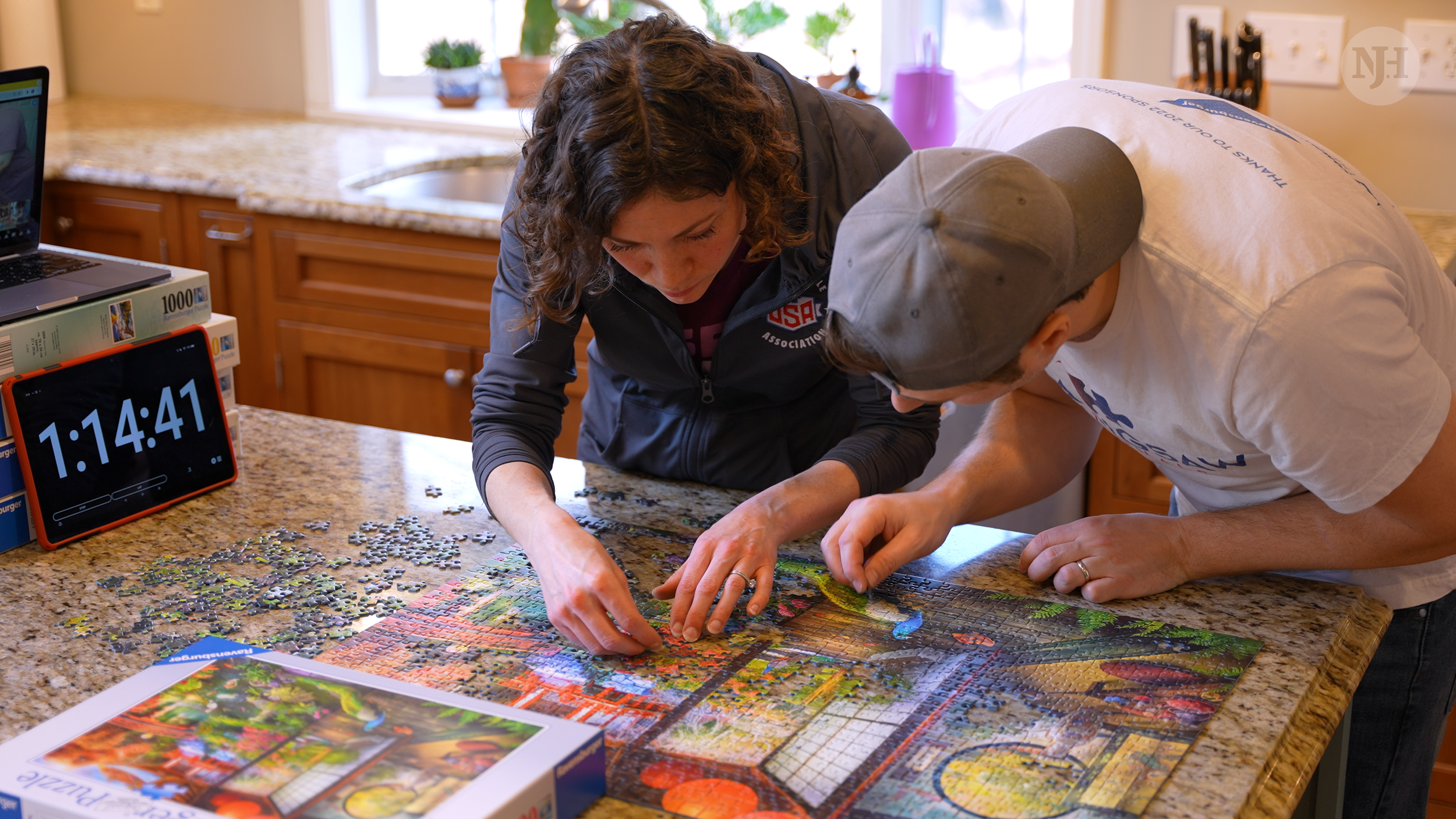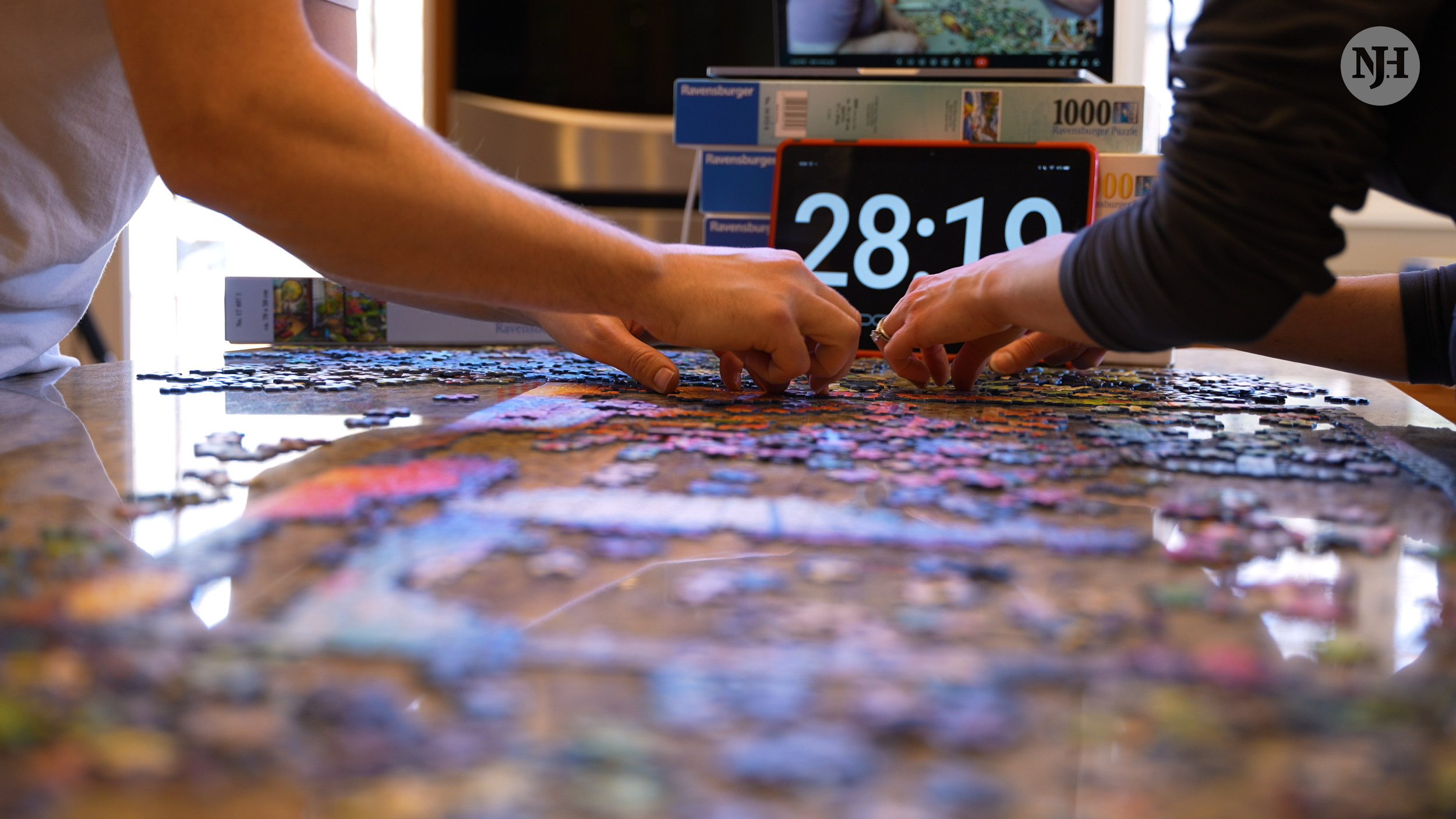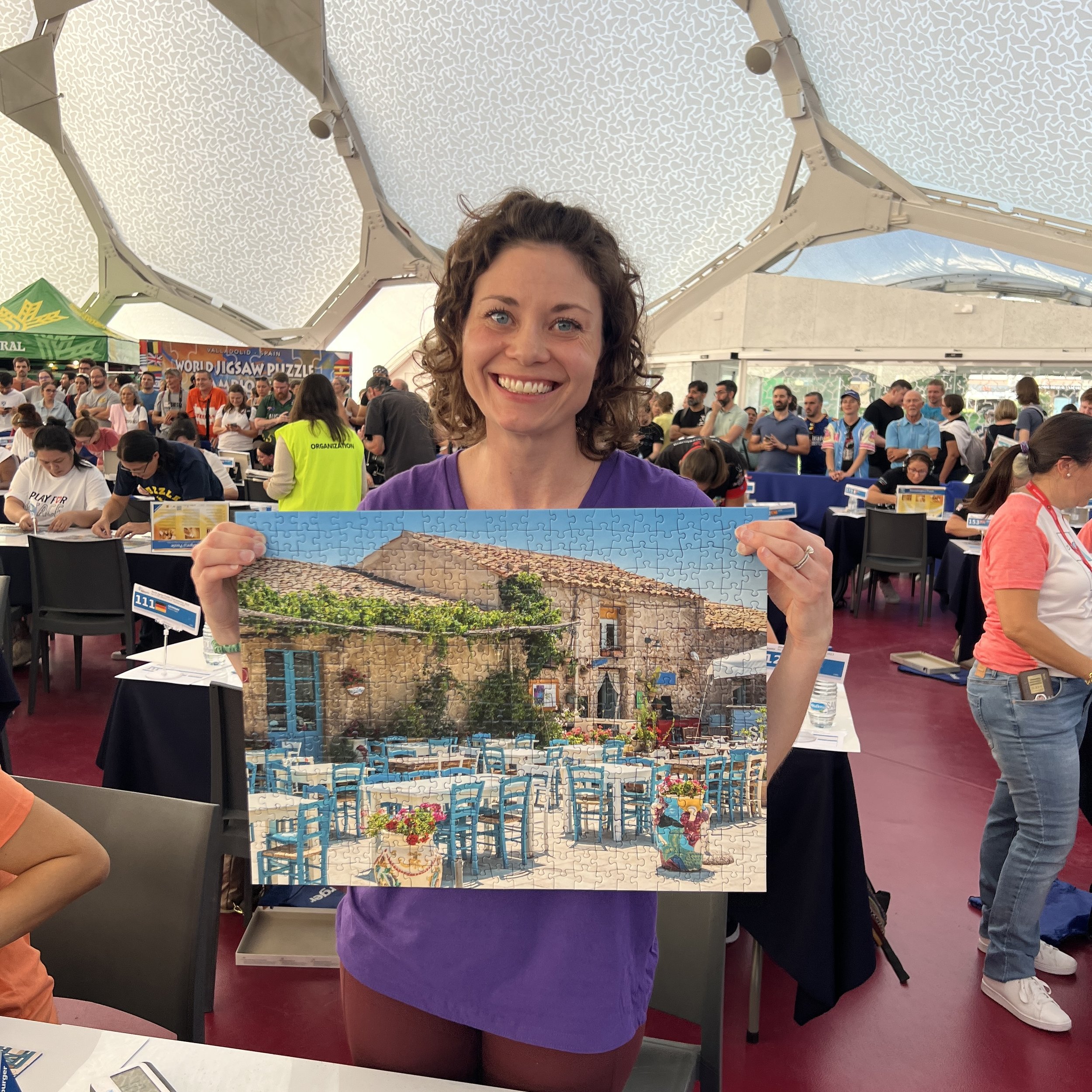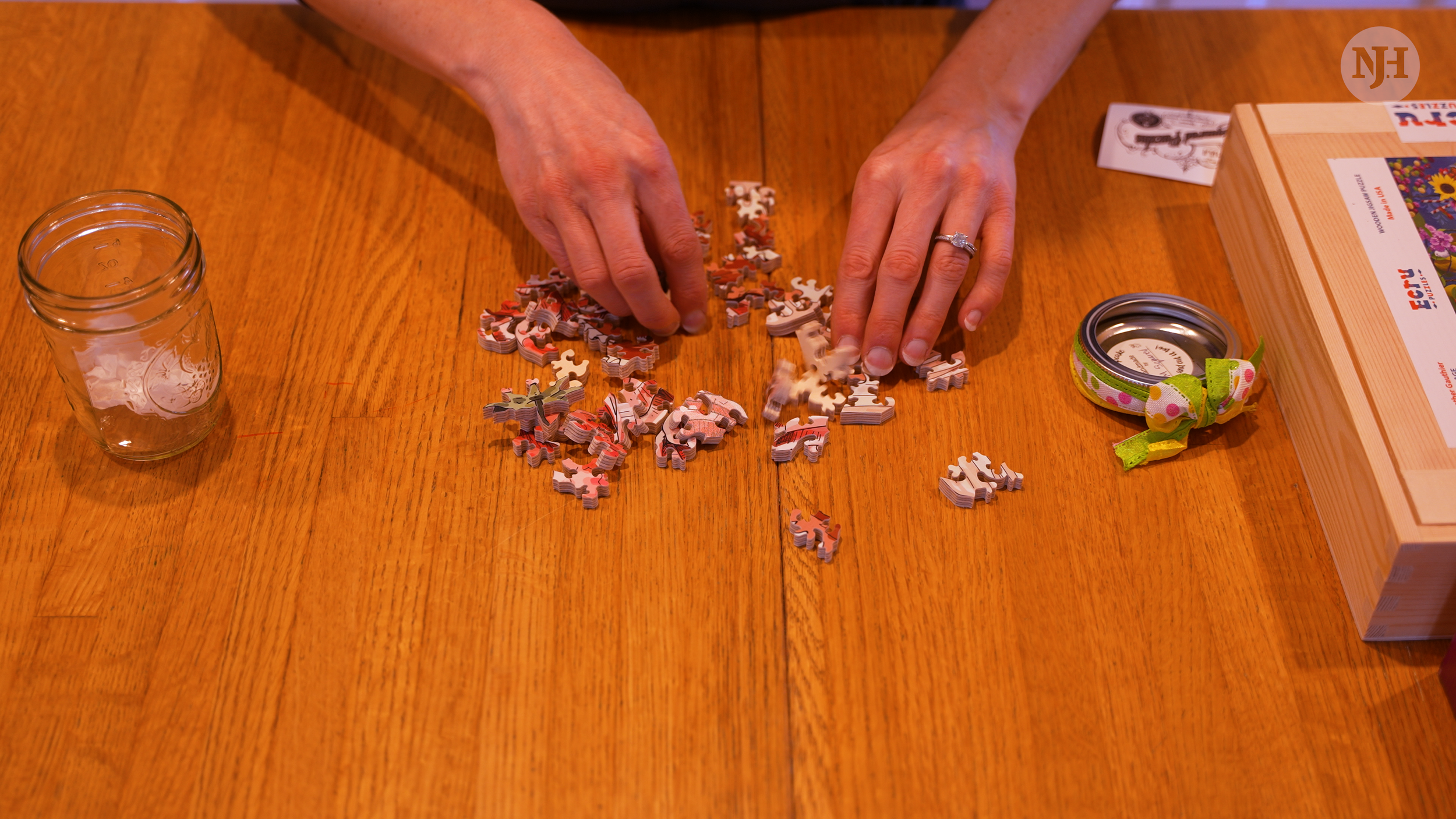Speed Puzzling
written by EB Caron @puzzlefreeordie
What is speed puzzling? Speed puzzling is putting together a jigsaw puzzle as fast as you can. To make things fair, everyone gets the same exact puzzle, and the puzzle image is hidden until the competition begins.
There are different types of speed puzzling events, including solo puzzling, pairs puzzling (with a partner), and team events (usually 4 people). Competitions typically involve one 300- to 1000-piece puzzle, but some of the top team events (like US Nationals and Worlds) involve multiple 1000-piece puzzles. In Europe, there are even puzzle marathons where teams work around the clock to try to assemble the most pieces in 24 hours!
Puzzling with a team is a great way to learn your strengths as a puzzler – some people are good at sorting, other love to assemble the edge, some people like to do large sections of the same color where they can focus on piece shapes, and other people are good at matching small details, colors and patterns.
I got started competing in puzzle competitions at local libraries back in 2019, and I think this is a great way to get started if you have family or friends who you can team up with. Book/game stores, breweries, and churches are other common places to find local puzzle competitions. Searching on Facebook Events is a good way to find speed puzzle competitions near you. You’ll also find community-hosted puzzle swaps on Facebook (look at both Facebook Events and Groups), and this is a great way to find low- to no-cost puzzles to practice with, and to meet other puzzlers! When you start speed puzzling, you go through puzzles quickly, so it’s good to find low-cost puzzle sources! Thrift stores and libraries are other good places to find used puzzles.
Since most local competitions are pair or team events, if you’re on your own as a puzzler, I’d suggest looking into the USA Jigsaw Puzzle Association (USAJPA) and speedpuzzling.com. Speedpuzzling.com runs several solo competitions over Zoom each month. It costs $35-40 to register for the competition, which includes the puzzle being shipped to you. The USAJPA also hosts informal solo puzzle races over Zoom each month.
If you’re interested in trying speed puzzling, I’d recommend starting with smaller puzzles. 1000-piece puzzles are great for casual puzzling over the course of multiple days, and for this reason, and are lot of people’s “go to” choice for puzzle size.
However, if you’re new to speed puzzling, I’d suggest trying out a 300-piece puzzle as a solo speed puzzler, or a 500-piece puzzle as a pair or team. Images with bright colors and clear sections will likely be easier as you get started. Aim for under 90 minutes as a goal time on your first speed puzzle, and when you accomplish that goal, keep practicing!
If you’d like to see how you stack up against speed puzzlers at the national and international level:
all publish puzzle competition results online. You can buy a copy of a past competition puzzle and race against recorded times.
If you’d like to see the puzzles I’ve done recently, or want to get in touch with questions, find me on Instagram @puzzlefreeordie.






Classic past-time, new twist.
Most of us have done a puzzle, or at least tried one, so it’s a familiar game. Speed Puzzling just takes it up a notch.
Compete against yourself, your friends, or new friends-to-be.
There’s so many puzzles out there too, you’ll never run out. And you’ll soon find your favorites.
Start small
As EB mentions, you don’t need to dive into an 1000-piece puzzle, even if it is the “standard” puzzle size.
There’s pocket-sized 100-piece puzzles and larger 500-piece ones.
Try out speed puzzling with a smaller size. No need to take up all the space just yet!
A new way to meet others.
If you’re interested in competing against others, you’ll naturally meet new folks. The best part is that you’ll have a shared interest in puzzling with each of these people. Talk puzzles! Ask about their strategies.
Discover more hobbies.
Discover more of EB’s speed puzzling on Instagram @puzzlefreeordie.









